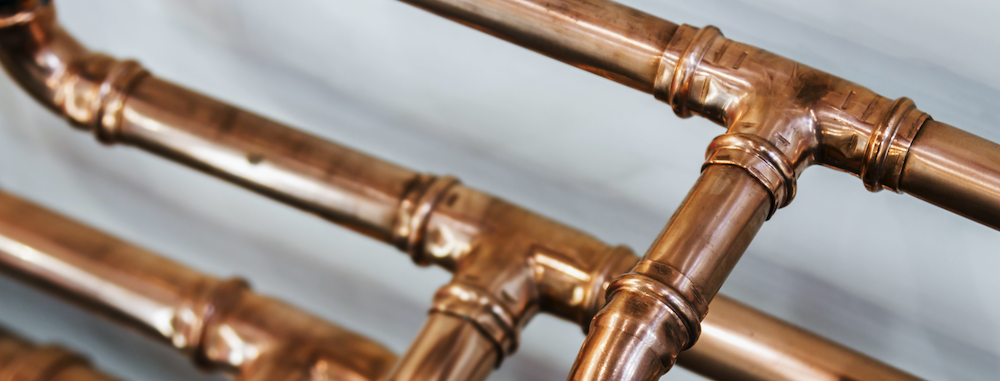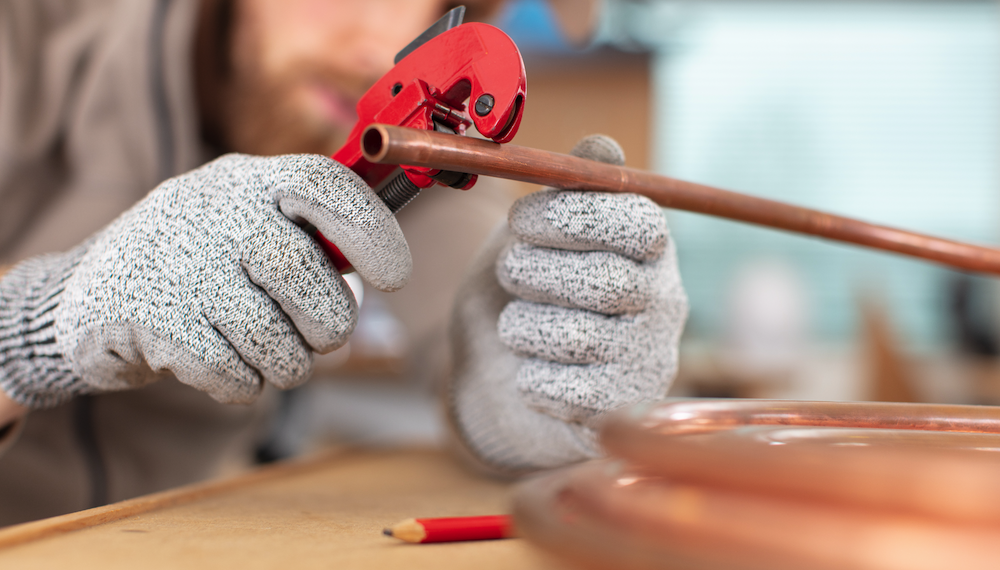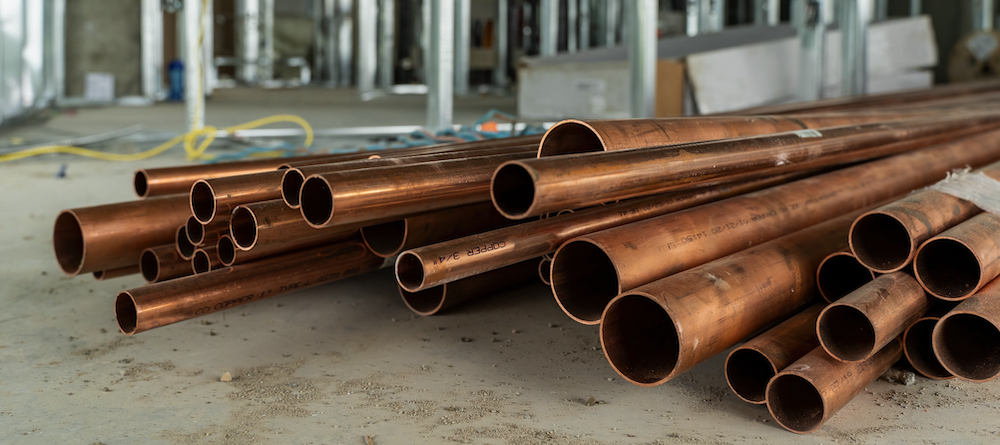A Guide to Copper in Plumbing Piping

Copper has been a cornerstone in plumbing systems for decades, valued for its durability, reliability, and long-lasting performance. This guide covers everything you need to know about copper plumbing piping, including its benefits, types and more...
Copper has been a staple in plumbing systems for decades, renowned for its durability, reliability, and long-lasting performance. This guide will take you through everything you need to know about copper plumbing piping, from its benefits and types to maintenance practices and troubleshooting common issues.
Why Choose Copper for Plumbing?
Copper has been the material of choice for plumbing pipes for many years. Its enduring popularity is due to several key benefits:
Durability and Longevity
Copper pipes are incredibly durable and can last up to 50 years or more. They are resistant to corrosion and can withstand extreme temperatures, making them ideal for both hot and cold water supply lines. This durability ensures that plumbing systems made from copper require less frequent replacements, thus reducing maintenance costs and efforts over the long term.
Safety and Health Benefits
Copper is a biostatic material, meaning bacteria cannot grow on it. This ensures that the water supply remains safe and free from harmful pathogens. Additionally, copper does not release harmful chemicals into the water, unlike some plastic piping materials. This makes copper a safer choice for drinking water systems, ensuring that the water remains clean and healthy. New Lead Requirements
Environmental Benefits
Copper is a natural, recyclable material. At the end of its life, copper piping can be recycled, reducing environmental impact. Its long lifespan also means fewer replacements and less waste. Using copper helps conserve resources and supports sustainable building practices. Why Copper
DID YOU KNOW?
The history of copper delivering water goes back over 4,000 years. Ancient Egyptians used copper as a conduit material to distribute water around 2150 B.C. The ancient Romans used copper for water pipes and cisterns. By the 1940s, copper became the most used material for plumbing in the developed world.
Types of Copper Pipes
There are several types of copper pipes, each suited for different applications:
Type K Copper Pipe
Type K has the thickest walls and is typically used for underground water service. It is the most durable and can withstand high pressure, making it ideal for main water lines. Due to its robustness, Type K is often used in commercial settings and areas where the pipes are subjected to high-stress conditions.
Type L Copper Pipe
Type L is commonly used for interior plumbing and is slightly thinner than Type K. It is versatile and can be used for most residential water supply and HVAC applications. This type of pipe strikes a balance between durability and ease of use, making it popular for both home and commercial use.
Type M Copper Pipe
Type M has the thinnest walls and is typically used for interior plumbing in residential settings. It is more affordable and easier to work with but not as durable as Type K or L. Type M is often chosen for budget-conscious projects where the plumbing system is not exposed to high stress.
DWV Copper Pipe
DWV (Drain, Waste, and Vent) pipes are used in non-pressurized applications such as drainage systems. They are not suitable for water supply lines due to their thin walls. DWV pipes are essential for ensuring proper drainage and ventilation in plumbing systems, preventing the build-up of gasses and maintaining the system's overall functionality.

Installation of Copper Plumbing Pipes
Proper installation is crucial to ensure the longevity and performance of copper plumbing pipes.
Proper soldering is crucial to creating strong, leak-proof connections that ensure the plumbing system's reliability and longevity.
Maintenance and Troubleshooting
Regular Inspections
Regularly inspect copper pipes for signs of corrosion, leaks, or damage. Early detection can prevent more severe issues and extend the life of your plumbing system. Inspections should be a part of routine maintenance, especially in older systems.
Addressing Leaks
If you notice a leak, it is essential to address it immediately. Small leaks can be repaired using a pipe repair clamp or by soldering a new piece of pipe in place. For larger issues, consult a professional plumber. Promptly fixing leaks prevents water damage and maintains the system's efficiency.
Preventing Corrosion
To prevent corrosion, ensure that the water pH levels are balanced and avoid connecting copper pipes directly to dissimilar metals without a dielectric union. Proper maintenance of water quality and careful installation practices can significantly reduce the risk of corrosion.
Common Issues with Copper Plumbing
Corrosion and Pinhole Leaks
While copper is resistant to many forms of corrosion, it is not immune. Over time, exposure to aggressive water chemistry can cause pinhole leaks. Regular inspections and water quality tests can help mitigate this issue. Addressing water quality issues and using corrosion inhibitors can extend the lifespan of copper pipes.
Water Discoloration
If you notice a blue-green tint in your water, it may indicate copper corrosion. Flushing the system and checking for pH imbalances can resolve this issue. Persistent discoloration should be addressed by a professional to prevent potential health hazards and further damage.
Freezing Pipes
Copper pipes can freeze and burst in extremely cold temperatures. Insulating your pipes and allowing a trickle of water to flow during freezing weather can prevent this. Proper insulation and winterization techniques are essential in cold climates to protect plumbing systems.
Copper plumbing piping remains a reliable and durable choice for both residential and commercial plumbing systems. Its longevity, safety benefits, and environmental advantages make it a preferred material for many plumbing applications. By understanding the types of copper pipes available, proper installation techniques, and maintenance practices, you can ensure your copper plumbing system remains efficient and long-lasting.
Whether you are a professional plumber or a DIY enthusiast, this guide provides the comprehensive knowledge needed to work with copper plumbing piping effectively. Embrace the reliability and quality of copper, and enjoy a plumbing system that stands the test of time.
Meet Metpress
Our Metpress range offers a fast, simple to install and is one of the safest and most reliable copper and brass pipe installation systems available for below and above ground applications. We know size matters, which is why we offer fittings ranging from DN15 to DN100 for both Gas and Water applications.
















